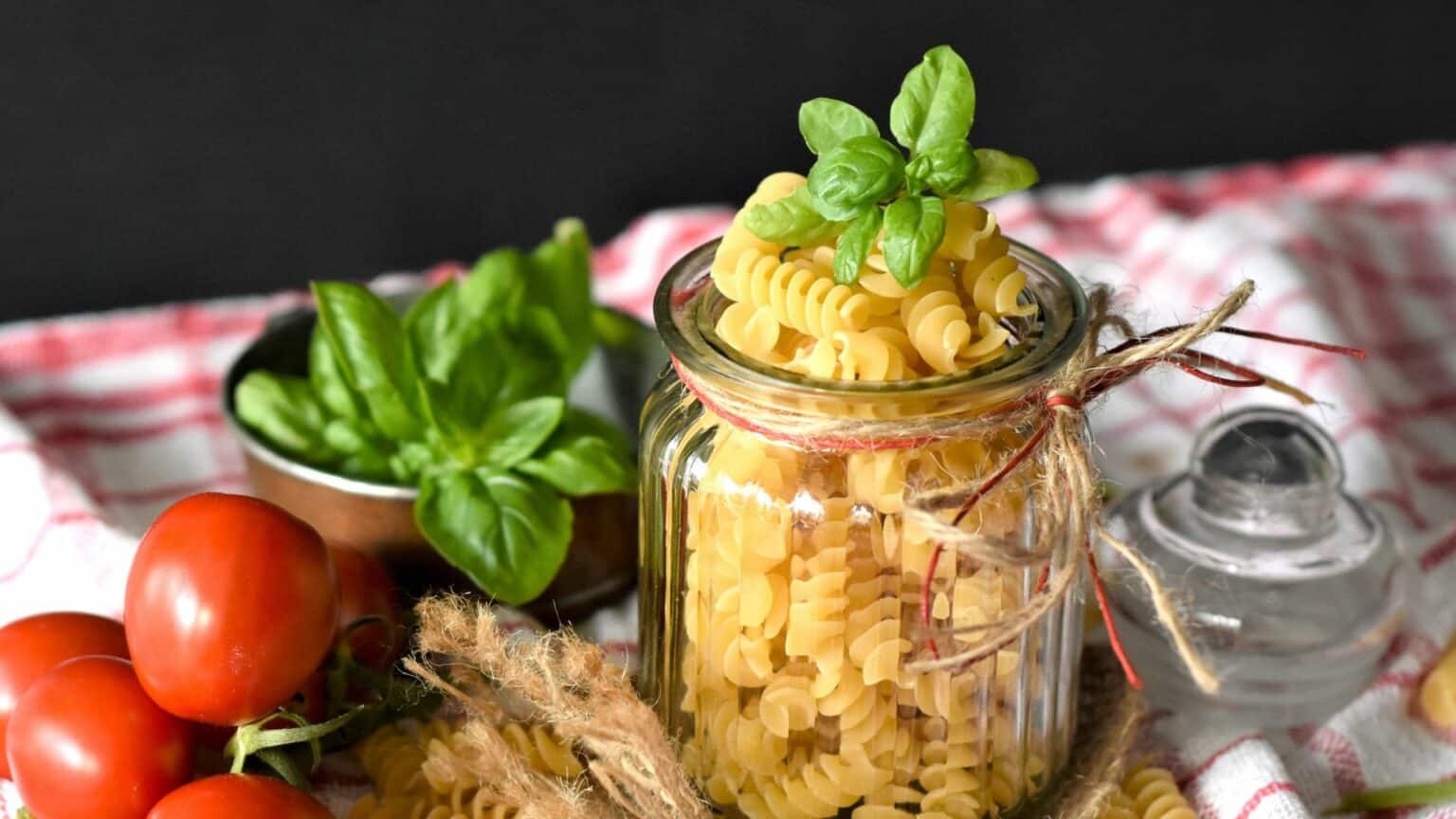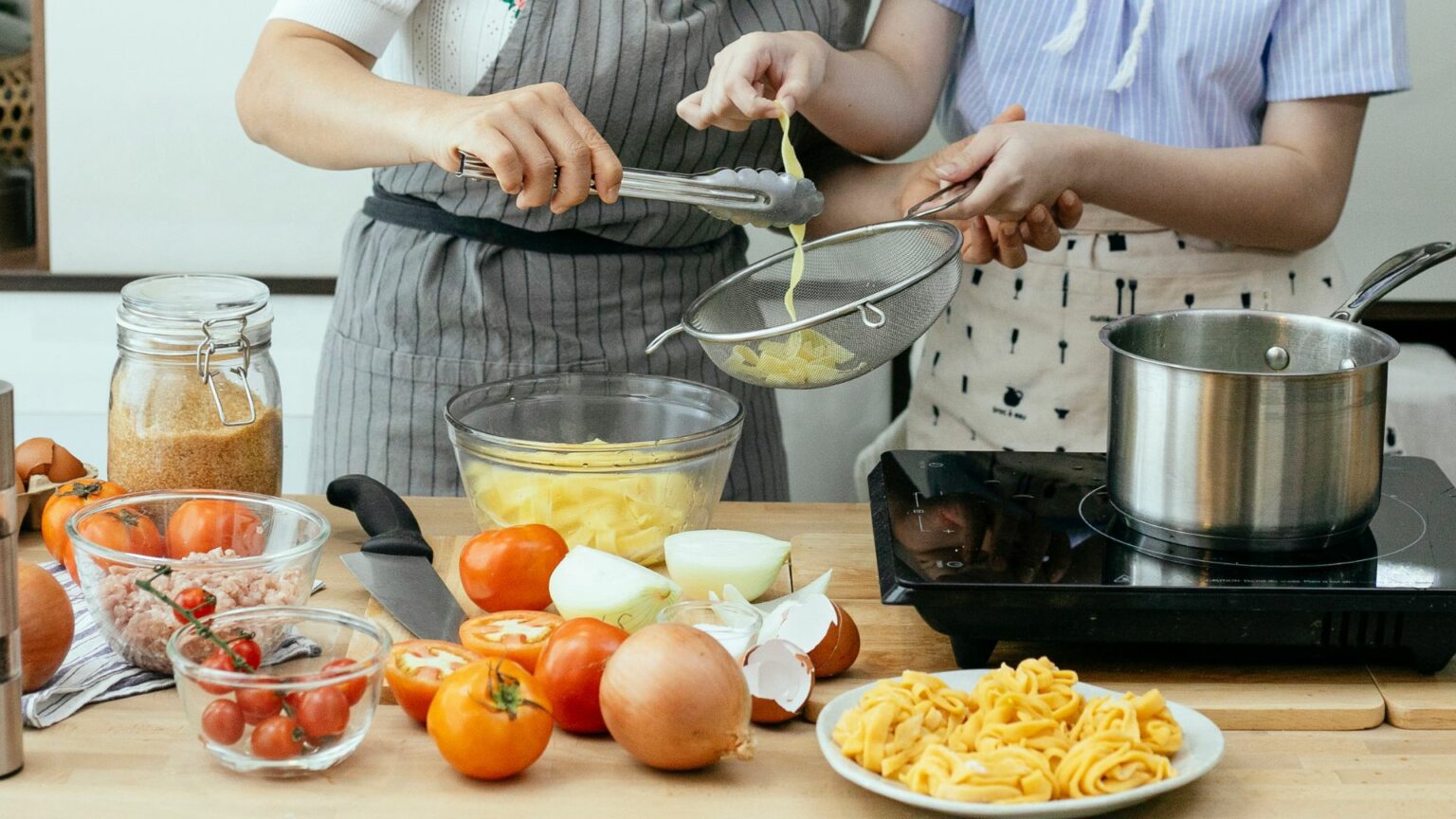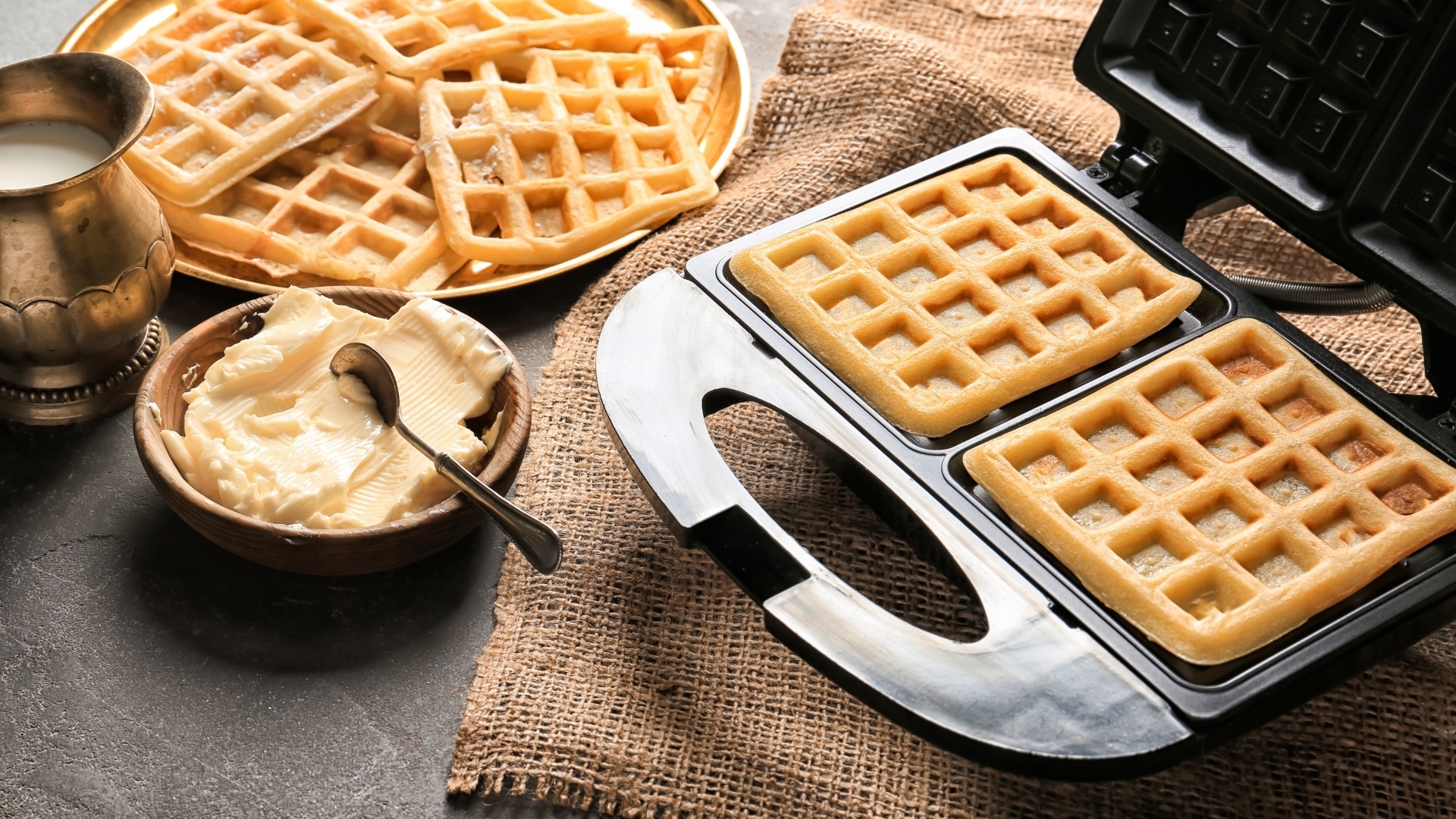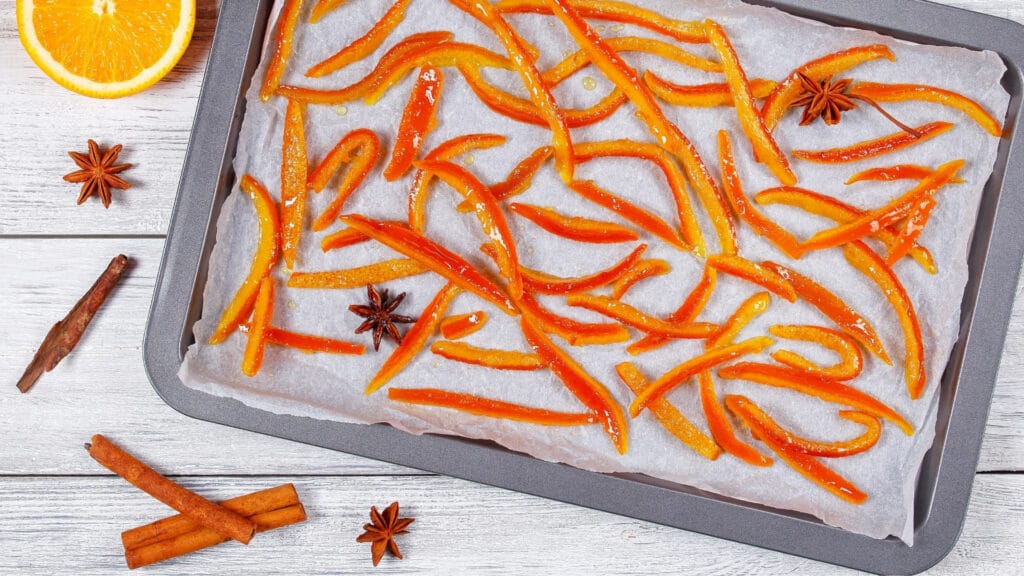How to Choose a Pot for Cooking Pasta

Last Updated: August 6, 2022
If you’re a pasta lover, then you know that having the right pot can make all the difference in the world. And when it comes to cooking pasta, there’s nothing quite like a special pot designed specifically for this purpose.
A special pot for cooking pasta consists of three items — a main vessel, a lid, and an inserted part with holes, similar to a deep colander. The pot is designed so that the water can boil in the main vessel and then the pasta can be cooked in the inserted part without having to remove the lid.
The inside of these pots is slightly smaller than the bottom, allowing the pasta to fit freely and quickly leave when it’s done. In addition to being used as a set, each part can also be used individually in the kitchen. So whether you need a pot for boiling water or one for draining your cooked pasta, these versatile pots have you covered.

Plus, they’re just really fun to use. There’s something about knowing that your pasta is being cooked in an actual pasta pot that just makes the experience that much better. So if you’re looking for an upgrade from your standard cooking pot, consider investing in one of these special pots designed specifically for making delicious pasta dishes.
How The Pasta Pot Is Built Up
When it comes to pasta, there is nothing more simple or convenient than cooking it in a pot with holes. This type of pot is designed specifically for cooking pasta, and all you have to do is insert the inner container with holes into the main one, pour water and put it on the stove. Next, pour in your pasta – whether it be spaghetti, shells, or any other type – and let it cook.
This method of cooking pasta is not only convenient, but also practical. There are no complicated instructions or steps to follow; all you need to do is put the pasta in the pot and let the boiling water do its job. In addition, because the water can circulate freely through the holes in the pot, your pasta will cook evenly and prevent sticking.

The perforated insert is a great way to drain water from pasta without losing any of the pasta itself. Simply lift the insert and hold it on top of the colander for a few seconds to let the water drain out. The pasta will remain in the colander, which can then be topped with oil, transferred to a saucepan or placed on plates. This method is quick and easy, and ensures that your pasta comes out perfectly every time. No more soggy noodles!
For those who are passionate about cooking, even an extra minute can affect the taste of the finished product. That is why the boiling water pot is ideal for those who want to achieve perfection with their dishes. With this appliance, you can be sure that your pasta will be cooked evenly and perfectly every time.
You also don’t have to lift the heavy pot with boiling water and carry it to the sink. Plus, this method ensures that your pasta will be cooked evenly throughout so you won’t end up with any undercooked or overcooked pieces.
Options for Special Pot Sets
When it comes to cooking pasta, the pot you use can make all the difference in the world. While there are a variety of pots on the market designed for cooking pasta, they all differ in one key way — their shape.
Specifically, special pots for spaghetti are tall and have a small diameter at the bottom, similar to a cylinder. This allows the spaghetti to be fully placed in the pot so that it cooks evenly without sticking together. The lid on these types of pots also fits snugly over the top of the cylinder, making it an ideal option for cooking other items like corn.
So if you’re looking for the perfect pot to cook your next batch of spaghetti in, be sure to choose one that is tall and has a small diameter at the bottom. This will ensure that your pasta cooks evenly and doesn’t stick together.
Pots and pans come in all shapes and sizes, but have you ever seen one specifically designed for cooking small pasta? These handy little pots are perfect for shells, spirals, cones, and other small pasta shapes, and they typically feature an insert that repeats the shape of the pot or is noticeably smaller in size.

Some models even come with feet for easy installation on the bottom, while others simply fit into recesses in the walls. No matter what type of small pasta pot you choose, it’s sure to come with a colander and handle for your convenience.
When it comes to cooking pasta, there are a few things you need to know in order to get it right. For one, large amounts of pasta cannot be cooked all at once. You’ll need to use variants with several inserts that prevent sticking if you’re looking to cook professionally.
Additionally, if desired, you can cook several different varieties of pasta at the same time in such containers. However, they will all need to have the same cooking time since removing one insert will lower the water level. With these tips in mind, you should be on your way to perfectly cooked pasta every time!
When it comes to stocking your kitchen with all the necessary cookware, one type of pot that you definitely need is a set with perforated and mesh inserts. These sets are specially designed for boiling and blanching vegetables, but they can also be used for pasta, especially spider, vermicelli and small shells.
Perforated and mesh insert sets usually come with two or three different sized pots, each with its own matching lid. The pot sizes typically range from four quarts up to eight quarts. The smaller pots in the set are perfect for boiling water to cook pasta or blanching vegetables like green beans or broccoli. The larger pots can be used for cooking larger quantities of food or for holding steamed vegetables until they’re ready to be served.
One advantage of using a set with perforated and mesh inserts is that it allows you to drain away any excess water quickly and easily. This is especially useful when you’re blanching vegetables because you can immediately transfer them to an ice bath after cooking them in the hot water. Additionally, the perforations in the bottom of the pot help to prevent sticking and make cleanup a breeze.
Other Pasta Cooking Utensils Options
If your family is not big on pasta, chances are you don’t need to go out and buy specialized cookware. A pot with a lid that has holes for draining water is a perfectly fine alternative. This type of pot is usually cheaper and takes up less space than a dedicated pasta pot. Plus, it can be used for other purposes such as boiling vegetables or making soup.
Of course, if you love pasta and plan on making it often, then it might be worth investing in a good quality pasta pot. These pots are designed specifically for cooking pasta and have features that make the process easier, like a built-in colander or strainer. They also tend to be roomier so you can fit more noodles in them. But if you’re not an avid pasta eater, there’s no need to splurge on one of these pots.
A regular pot with a lid that has two different sized openings will suffice. The most practical type of lid has small holes on one side and large ones on the other. This way, you can easily close the lid tightly by simply turning the handle. Plus, water boils faster in a closed container — meaning your pasta will be ready sooner. So if you’re looking for a quick and easy meal that everyone will love, look no further than pasta. With the right pot and some simple ingredients, you can have a delicious dish on the table in no time.

If you don’t have a lot of space to store cookware, an ordinary pot can be used to boil pasta. The main thing to remember is that water requires at least a liter per 100 grams of pasta, so the cookware should be large enough to accommodate that amount of water. Boiling pasta in a smaller pot can result in the pasta sticking together, so it’s best to use a pot with a large diameter.
Here are some tips for boiling pasta in a pot:
— Start by filling the pot with plenty of water. Bring the water to a boil before adding the pasta.
— Add the pasta and stir occasionally, making sure all the noodles are cooked evenly. Depending on the type and size of pasta, cooking time will vary — refer to package instructions.
— Once the pasta is cooked, drain it in a colander or sieve. Rinse with cold water if desired. Serve immediately with your favorite sauce or toppings. Buon appetito!
When it comes to cooking pasta, there are a few different materials that you can choose from. Stainless steel and aluminum are two of the most popular options. But which one is the best to use?
Here’s a look at the pros and cons of each material:
Stainless Steel:
-Pros: Even heating, doesn’t react with food, durable
-Cons: Can be more expensive, heavier
Aluminum:
-Pros: Heats up quickly, lightweight
-Cons: Can react with certain foods, not as durable as stainless steel
So, what’s the verdict? Ultimately, it comes down to personal preference. If you don’t mind spending a little extra money, then stainless steel is a great option. It’s also a good choice if you want something that is heavy duty and will last for years to come. However, if you’re looking for something that heats up quickly and is easy to carry around, then aluminum might be the better choice for you.
If you’re looking for the best cookware for making pasta, you might be tempted to buy a set of enameled pots and pans. But before you do, there’s something you should know: enameled cookware is not suitable for pasta dishes. The reason is that pasta sticks to the surface of the bottom and walls, making it difficult to get a good result. Non-stick coatings are not necessary, but if there is nothing suitable, you can also take a non-stick pan. The choice in favor of non-stick options should be made if you cook pasta with milk, not water.
Additional Inserts
There’s no denying that pasta is one of the most delicious and versatile dishes out there. Whether you’re in the mood for a hearty carbonara or a simple spaghetti with tomato sauce, there’s a pasta dish to suit everyone’s taste. However, if you already have a lot of different types of pans in your kitchen, you may be wondering whether it’s worth buying another one specifically for pasta.
The good news is that there are some very effective extra inserts available which have holes or mesh, meaning that you can use them with your existing cookware. Simply choose an insert according to the height and diameter of your pan, making sure that the holes are small enough so that the pasta won’t float outside during cooking.
Not only is this option more economical than buying new cookware, but it also means that you can continue to use your favourite pots and pans for other dishes too. So next time you’re planning on whipping up some pasta, don’t forget to check whether an extra insert might be the answer.

If you’re looking for a colander that’s both convenient and efficient, look no further than one with legs. They can be even higher than the basic crockery, so you won’t have to worry about water spilling over the edge. Plus, the lid will keep anything from falling into the colander while you’re working. Some manufacturers even produce inserts with lids, making it even easier to use. Whether you’re washing vegetables or draining pasta, a colander with legs is the way to go.
With a removable colander, you can cook not only pasta, but also dumplings, potatoes, broccoli, eggs and other products that are troublesome for their small size. This kitchen gadget is ideal for those who want to save time and energy when cooking.
Removable colanders come in all sorts of sizes, so you can find one that fits your needs perfectly. They’re also made from different materials like plastic or steel, so you can choose the option that best suits your cooking style. And if you’re worried about price, don’t be – these strainers are very affordable and will definitely save you money in the long run.

Making a decision about which pot to buy can be tricky. There are so many factors to consider! But if you’re looking for a reliable and comfortable pot for cooking spaghetti, noodles, pasta, or other similar dishes, there are some general guidelines you should keep in mind.
To start with, it’s important to make sure the pot you choose is compatible with your stove. It should be the right size for the burner you’re using, and made from a material that won’t warp or scratch easily. You’ll also want to make sure the lid fits snugly on the pot, and that the handles are both sturdy and comfortable to hold.
Convenience and safety are two more important considerations when choosing a pot. Look for one that is easy to clean, and has features like an automatic shut-off function or cool-touch handles. And of course, always read the instructions carefully before using any new kitchen appliance!
By keeping these guidelines in mind, you can be sure to find a pot that will make cooking pasta a breeze — without breaking the bank. Happy shopping!
Recommended Articles :
Copyright 2024 © Beyond the Embrace
Beyondtheembrace.com is a participant in the Amazon Services LLC Associates Program, an affiliate advertising program designed to provide a means for sites to earn advertising fees by advertising and linking to Amazon.com.




